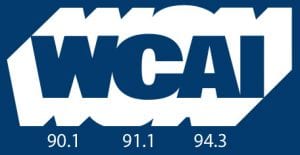WHOI in the News
Toxin that causes paralytic shellfish poisoning blamed for Alaska seal deaths
Toxin that causes paralytic shellfish poisoning blamed for Alaska seal deaths
NY Indigenous women use seaweed to conserve shellfish
Study: Acidic ocean could devastate Cape Cod and Islands shellfish industry
A Tiny Camera Could Help Shellfish Farmers Avoid Big Losses
Cape Cod’s shellfish farmers face many challenges, and one of the biggest is dealing with harmful algal blooms, which can damage shellfish and be poisonous for humans to ingest. But a new project at the Woods Hole Oceanographic Institution is looking at a way to better manage this with the help of a tiny camera.
All Things Shellfish
Quotes (Jennie Rheuban)
Science Meets Shellfish
Blue Hill Bay closed to shellfish harvesting
mentions WHOI
Nitrogen Removal by Shellfish Measured in First Comprehensive Study
mentions WHOI
First measurement of nitrogen removal by local shellfish February 7, 2017
Warmer Waters Linked to Higher Levels of Shellfish Toxin
mentions Judy McDowell and WHOI
Waterways Remain Closed To Shellfishing
quotes Hauke Kite-Powell and mentions WHOI
‘Unprecedented’ Phytoplankton Bloom Closes Shellfish Beds In 3 States
mentions WHOI Guest Investigator Kate Hubbard
Some Down East shellfishing areas reopened
quotes Kate Hubbard and mentions WHOI
Shellfish closure expanded as cost to industry mounts
mentions WHOI
Shellfish mother lode found off Cape May
Mentions HabCam built at WHOI for NOAA. Also covered in, Press of Atlanic City, The New Jersey Herald, The Washington Times, and others.
Nauset Estuary and Town Cove closed to shellfishing
mentions WHOI
Rising acid levels in oceans imperil region’s shellfish
quotes Hauke Kite-Powell
Climate change doesn’t only mean rising oceans — your health is at risk, too
According to the Woods Hole Oceanographic Institution website, diarrhetic shellfish poisoning produces gastrointestinal symptoms, usually beginning within 30 minutes to a few hours after consumption of toxic shellfish. Although not fatal, the illness is characterized by incapacitating diarrhea, nausea, vomiting and abdominal pain.




